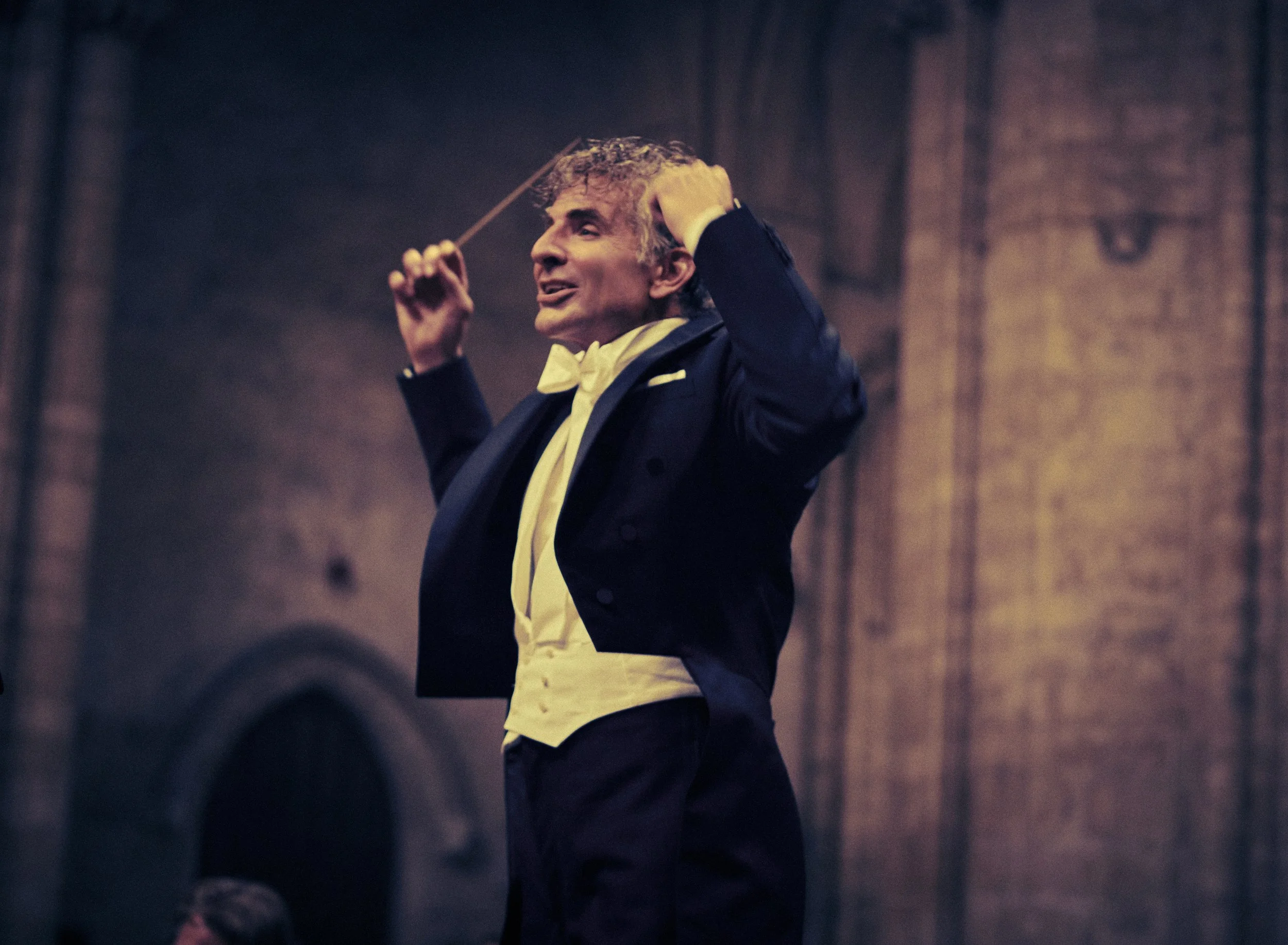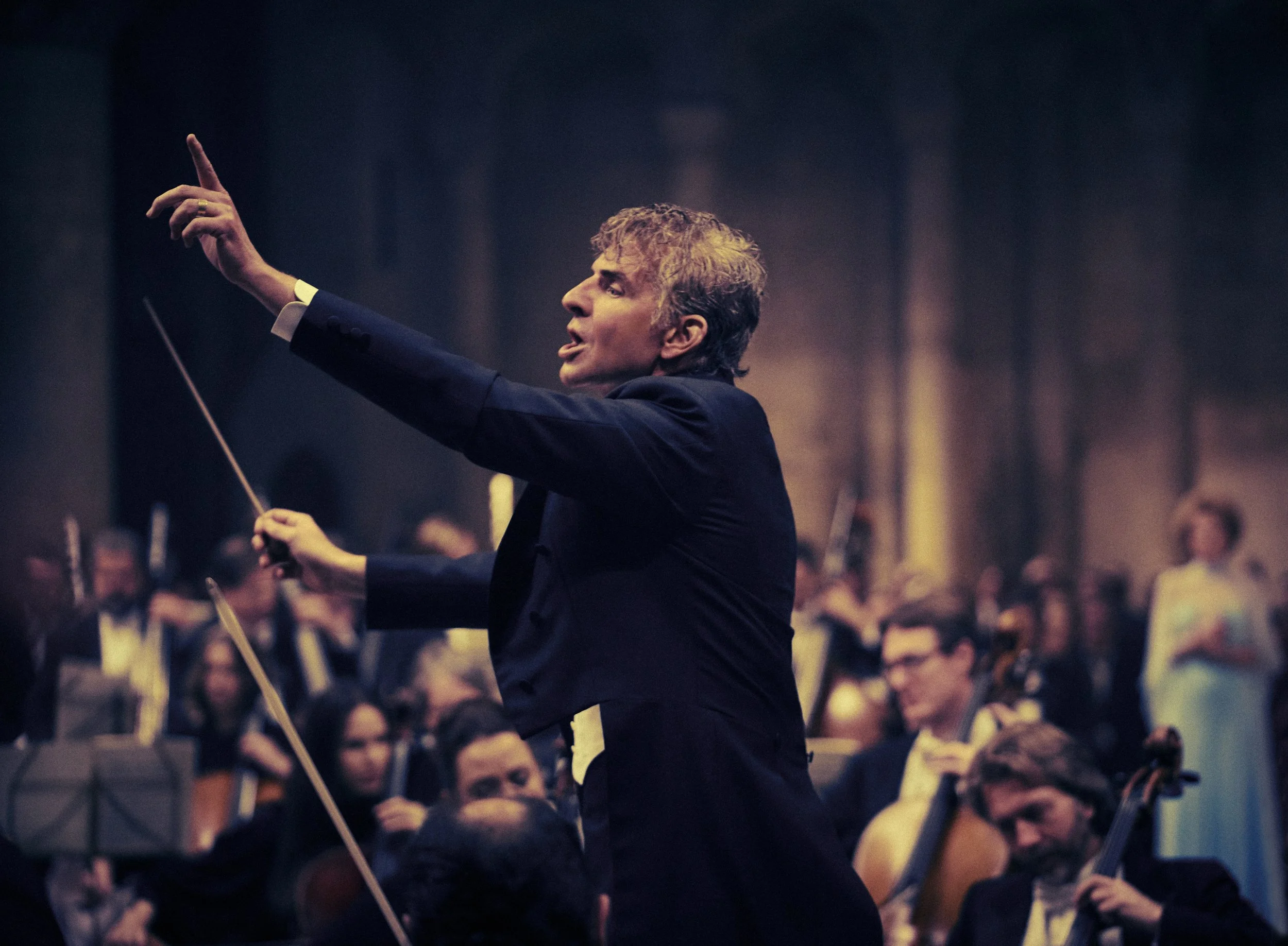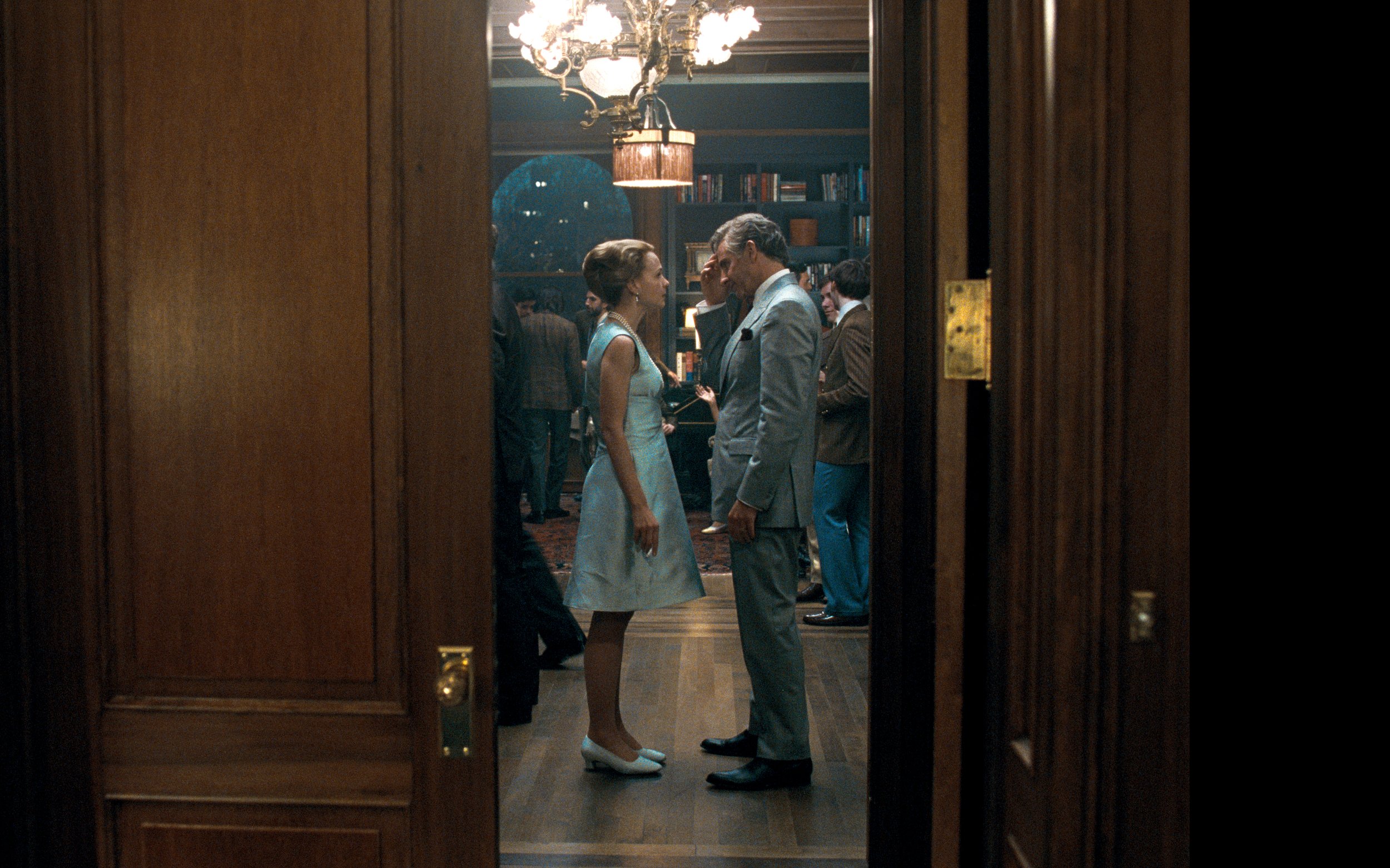MOVIE REVIEW: Maestro
MAESTRO– 5 STARS
Despite the film’s prodigious title and the eminence of the subject, nine-time Academy Award nominee Bradley Cooper– wearing the hats of producer, writer, director, and star– puts great emphasis on Maestro being more centered on the love story of Leonard Bernstein and his wife Felicia Montealegre, played by two-time Oscar nominee Carey Mulligan, than on Bernstein’s numerous accomplishments. Through its rich back story spanning decades, “husband” rises to become the leading descriptor over conductor, composer, pianist, musician, educator, author, and humanitarian, and the film is tremendously finer for it. No matter the triumphant or tragic moments on display in Maestro, the marital relationship is the nucleus. There is an irrefutable and intense stretch before, during, and after the movie’s apex that underlines every invested and brilliant measure of Cooper and his creative collaborators towards the goals of their intimate approach.
LESSON #1: HATE IN ONE’S HEART– Before the climax, Leonard and Felicia had fallen on divisive times and separated. A scene or two earlier, Cooper and cinematographer Matthew Libatique showed an unbroken full shot of the couple having a knockdown-dragout verbal fight while the balloons of the Macy’s Thanksgiving Day Parade pass outside their swanky apartment windows. Felicia had called out the hate and anger that drove her husband’s heart and how his supposedly open artistic freedom and truth carried a draining aura that damaged their marriage and family.
Following that scene, Maestro lets that vitriol linger before arriving at the film’s musical centerpiece. Bernstein has cleaned himself up in 1973 and is in full, tailed tuxedo conducting the London Symphony Orchestra and the Edinburgh Festival Chorus in Mahler’s Symphony No. 2 in C minor, better known as the Resurrection Symphony, at England’s Ely Cathedral. Libatique’s camera cranes in and out of conductor’s box to set points amid the spread of live performers and vocalists while absorbing Cooper’s vigorous conducting choreography tutored to him by Metropolitan Opera director Yannick Nézet-Séguin.
This is the finale of the symphony where the texture of sweat has developed on Bernstein’s face and animated his silvered hair with every emphatic gesture during a massive 6 1⁄2 minute take (it took only two attempts). In your ears alone, the powerful sound of this moment in Maestro is overwhelming and presses you into your seat, but the peak of peaks is still coming.
LESSON #2: THE EMOTIONS GENERATED BY PERFORMANCE AND MUSIC– At the end of one of Libatique’s deep pulls back, we see the unmistakable shoulder and head profile of the previously-absent Felicia. Even after their baneful previous strife, she’s there at Leonard’s finest moment, standing mere feet off the central altar of this grand church setting. The realization of her return hits us harder than the boldest note of music being played. After the concluding stroke and the initial cheers of the gathered crowd, Leonard goes straight to her between bows overcome with emotion. They tearfully embrace and she declares in his ear, “There’s no hate in your heart,” correcting the previous argument.
What a build! In a deft stroke of precise performance, timing, and positioning, the weight of this climax in Maestro tectonically shifts from the grandest musical demonstration of Bernstein’s love and hate to a healing release of it granted by the love of this life. Felicia’s presence and acknowledgment is the greater achievement than conquering Mahler. Alas, Bradley Cooper is not done yet with this wringer.
LESSON #3: BEING PRESENT FOR THE ONES YOU LOVE– Immediately after the thunderous applause finish of the Ely Cathedral concert, Maestro shifts from that highest of highs to a quiet, plain doctor’s exam room and some of the worst news a married couple and a woman can receive. Unlike what we previously witnessed, this is a painful memory with no accompanying score and no uproarious spectators. Right after this visit, Leonard and Felicia sit back-to-back in a park, calling back a previous scene shot in black-and-white from their courtship years where they talked about the power of a pair and being each other’s balance. Decades later, it is simply the two of them locked together again, supporting the physical and emotional weight of the other, and recognizing the thick and thin of love and life they have currently and will share going forward.
The courage of Cooper and Maestro to make this emotional swing almost collapses one’s aerobic heart from where it was mere moments prior. From the Thanksgiving Parade argument through the Ely Cathedral concert, the doctor’s office, and this return to a tree-filled park together, Maestro comes full circle with its love story that just so happens to feature the music and work of one of America’s greatest artists. The fact that there are entire expanses of drama leading up to and following the climactic stretch of Maestro described above only adds to the astonishing achievement on display.
Maestro is bookended by Cooper playing Bernstein at his wrinkled and white-haired oldest (courtesy of exceptional prosthetic facial and body makeup from two-time Oscar winner Kazu Hiro) remembering the wife who has passed on before him for a recorded interview in his Fairfield, Connecticut family home. After showing off his piano chops with an ever-present lit cigarette in his mouth in the first scene, Leonard utters, “To answer your question, yes, I see her around quite a bit,” and in conclusion before the film ventures to origins, “I miss her terribly.” This is the clue that would flourish later informing us that what follows may very well be more about her than him.
From there, Maestro makes the switch to black-and-white and the 1.3:1 aspect ratio for the whirlwind years of a younger Leonard Bernstein. His substitution debut conducting the New York Philharmonic Orchestra at Carnegie Hall in 1943 with only a few hours notice and no rehearsal made him an instant sensation in high demand for his work on stage and screen. As soon as he meets actress Felicia Montealegre at a party with Marlene Dietrich music playing in the background, the stars and their luck change. Pillow talk of envies and secrets–spiced by sweet nothings like “You don’t know how much you need me” answered by “I might”-- matures between them to an acceptance of busy schedules and an uneasy tolerance of Leonard’s closeted bisexuality (a focal point of strife in the story).
Sure enough, long after Maestro has turned to color photography and traditional widescreen for its middle and climactic segments, the film arrives back at the elder Bernstein still at the same piano for the interview. Reaching this end, we’ve seen him be generous with his teaching of music and indulge in more than his fair share of love and creativity. We’ve seen him vacillate between introvert and extrovert, watch Felicia wither to cancer, and improve as a parent to his three children Jamie (prominently played later by Maya Hawke), Alexander, and Nina. Nonetheless, his spirit-lifting thoughts remain on her.
LESSON #4: AN ARTIST MUST CREATE IN ABSOLUTE FREEDOM– Maestro’s incredibly intimate journey comes from the infinite talent, energy, and education of Bradley Cooper. Borrowing one of Bernstein’s lines from the movie for this lesson, Cooper became an artist who created in absolute freedom. His work ethic of different roles, merged mentalities, and divisions of attention and favoritism matched his subject’s in the realm of music. Backed by producing might that included Steven Spielberg and Martin Scorsese, it took six years of coaching, preparation, and personal improvement to bring this story to life, and the careful curation shows in every frame of the film.
Chronicling Leonard Bernstein requires perfection in the music department and Maestro got it from executive music producer and supervising music editor Jason Ruder (Babylon, The Color Purple). Cooper insisted on shooting and recording Maestro’s many musical performance scenes on the set rather than as a bisected layer recorded and applied in post-production. For those numbers, including that showstopper at the Ely Cathedral with the current incarnation of the London Symphony Orchestra belting their best, Maestro meticulously recreated the performances and dressed the actual locations with full audiences, complete with the actor-director conducting the musicians himself, and in character no less.
Reunited with A Star is Born cinematographer Matthew Libatique, Cooper sought to shoot and stage Maestro completely differently than the tight zooms of that 2018 critical and commercial success. The two mashed in some VFX trickery from John Bair to assist blind cuts and crane moves amid sleek transitions awash with shadow and light. At every turn, the execution is way up in Cooper’s sophomore directing effort. Collaborating with two-time Oscar-winning Phantom Thread and The Artist costume designer Mark Bridges and Birdman and Ad Astra production designer allowed the production to pour over every surface and stitch with heavily-researched accurate period detail, including some of Bernstein’s own surviving personal possessions. The movie is immaculate from decadence down to domesticity.
To say Bradley Cooper threw himself into his work is an understatement. He is a marvel to behold. The actor was operating with a spot-on imitation of Bernstein’s vocal annunciations, inflections, cadence, and tone. He found all the highs and lows of hubris, profundity, stress, dedication, and talent in front of and behind the camera. Is all of this in Maestro ostentatious hopscotch from Cooper? Probably, but what else would you expect from an energy like working at an insanely masterful level?
True to the final image of the film and matching to the historical relationship, Maestro, with all its hats worn by Bradley Cooper, does not function without Carey Mulligan. The English actress matches her co-star’s commitment with luminosity all her own. With willowing wallop and intricate delicacy throughout each of the stages of life on display, all of the passion, anguish, worry, conflict, and triumph of the picture is distilled through her stalwart performance filled with measureless kindness. Together, they have clinched something truly special.
LOGO DESIGNED BY MEENTS ILLUSTRATED (#1158)







